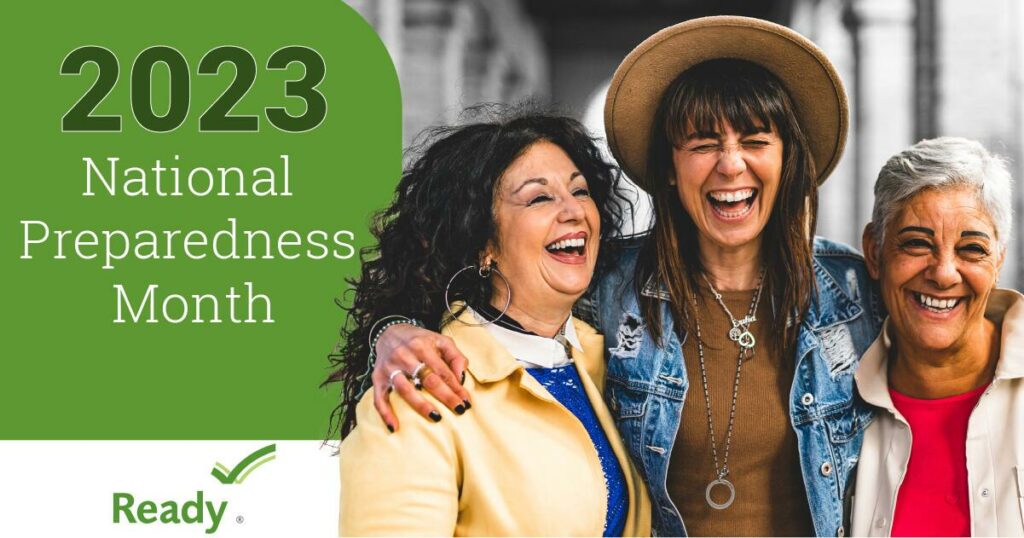2023 National Preparedness Month
go.ncsu.edu/readext?955288
en Español / em Português
El inglés es el idioma de control de esta página. En la medida en que haya algún conflicto entre la traducción al inglés y la traducción, el inglés prevalece.
Al hacer clic en el enlace de traducción se activa un servicio de traducción gratuito para convertir la página al español. Al igual que con cualquier traducción por Internet, la conversión no es sensible al contexto y puede que no traduzca el texto en su significado original. NC State Extension no garantiza la exactitud del texto traducido. Por favor, tenga en cuenta que algunas aplicaciones y/o servicios pueden no funcionar como se espera cuando se traducen.
Português
Inglês é o idioma de controle desta página. Na medida que haja algum conflito entre o texto original em Inglês e a tradução, o Inglês prevalece.
Ao clicar no link de tradução, um serviço gratuito de tradução será ativado para converter a página para o Português. Como em qualquer tradução pela internet, a conversão não é sensivel ao contexto e pode não ocorrer a tradução para o significado orginal. O serviço de Extensão da Carolina do Norte (NC State Extension) não garante a exatidão do texto traduzido. Por favor, observe que algumas funções ou serviços podem não funcionar como esperado após a tradução.
English
English is the controlling language of this page. To the extent there is any conflict between the English text and the translation, English controls.
Clicking on the translation link activates a free translation service to convert the page to Spanish. As with any Internet translation, the conversion is not context-sensitive and may not translate the text to its original meaning. NC State Extension does not guarantee the accuracy of the translated text. Please note that some applications and/or services may not function as expected when translated.
Collapse ▲
September is National Preparedness month and the theme for 2023 is “Take Control in 1, 2, 3”. The campaign is focused on preparing older adults for disasters.
Older adults can face greater risks when it comes to the extreme weather events and other disasters. This is especially true if they are living alone, have low-income, have a disability, or live in rural areas.

Older adults and their caregivers can overcome these potential obstacles and increase their resilience by taking control in 1, 2, 3.

1. Assess Your Needs – Think about things that you will need in the event of an emergency. Some of these items might include medication, oxygen, mobility devices, or other assistive devices.
Think about other factors that might impact these things like refrigeration or power requirements. You will need to understand how these requirements will determine what you will need in the event of an emergency.
Communication is also an important need so remember your phone and ways to keep it charged if the power is out.
If you have a pet or service animal, make sure to assess their needs as well. Another thing to remember is if you have an animal, it might impact where you can go if evacuation is required.

2. Make a Plan – Now that you know your needs, you can make a plan that make sure they are met.
Building a “Go” bag or emergency kit is a great way to plan and prepare for a disaster. NC State Extension has publications on making A Disaster Kit for Staying at Home or making an
Evacuation Disaster Kit.
Making a kit is just one part of planning for a disaster. Helping Your Family Prepare Before a Disaster is a publication that can help you think of ways to plan in advance of an emergency.
If you have a pet or service animal, make sure to include their care in your emergency planning. Caring for Your Pets in an Emergency can help you with making sure your pet is safe.
Ready.gov also has lots of resources for planning for an emergency. If you are an older adult or work with and support older adult communities visit Ready.gov/older-adults and Ready.gov/es/adultos-mayores for additional resources.

3. Engage with your community – It is important to know what resources are available in your community. Reaching out to family, friends and neighbors can help you build a support network that can support you before, during and after a disaster or emergency.
Make sure to include a friend or relative in another area who would not be impacted by the same emergency in your plans.
Share each aspect of your emergency plan with everyone in your group. Make sure everyone knows how you plan to evacuate and where you will go in case of a disaster.
Disasters can happen anytime and anywhere. Make sure that you and your family are prepared to cope with an emergency before it happens. The time to prepare is now, before a disaster strikes.
NC State Extension has Disaster Preparation resources available to help you get prepared. You can also find additional resources at NC Ready and at Ready.gov.


